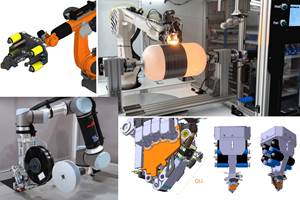Gas-Assisted Injection G.E.T.S BMC Costs Down
Gas Evacuation Technique (G.E.T.) produces hollow components with long, narrow profiles, saving material and shortening cycle times.
Share
For at least a decade, gas-assisted injection molding (GAIM) processes have been used successfully to form hollow, tubular products, such as appliance handles, using fiber-reinforced thermoplastics. GAIM uses injection molding equipment modified to permit injection of pressurized nitrogen gas through either the existing injection nozzle or a separate port near the nozzle. The gas is used to form a hollow cavity inside the part in one of two ways. One method completely fills the mold cavity, then as the thermoplastic begins to cool from the outside in, gas is used to "core out" the part -- that is, force still molten thermoplastic out of the cross-sectional center of the part, where it can be collected and (being a thermoplastic) reused. Part wall thickness in this case depends on the rate at which the thermoplastic cools and the timing of the gas injection. In the more common of the two methods, a "short shot," that is, a smaller quantity of material, is injected. During shot injection, gas is introduced, causing the material to inflate like a balloon and fill the mold cavity. Part wall thickness is controlled by the quantity of material in the short shot in combination with the timing and rate of gas injection.
"Gas-assisted injection molding of thermoplastics is a significant manufacturing advancement," says Len Nunnery, director of sales and marketing at Bulk Molding Compounds Inc. (BMCI, W. Chicago, Ill.), a major supplier of thermoset bulk molding compound (BMC). Nunnery reports that the GAIM technique not only reduces the volume of material required for each component but, since hollow parts require less time to cool, shortens cycle time as well, in some cases doubling mold yield. Moreover, the pressurized gas maintains the "packing" pressure on the shot (provided only by the screw or ram in conventional injection) after the injection gate closes, helping to prevent warp by maintaining compaction until the part is fully solidified. And, Nunnery notes, the process also is credited with reducing molded-in stress, sink marks, internal stratification and other process-related problems.
As GAIM has proliferated, hollow thermoplastic composite components have become cost-competitive with thermoset equivalents, for which the only injection molding option has been a solid part. "Even high-heat applications, traditionally dominated by thermosets, are beginning to be penetrated by gas-assisted engineering thermoplastic," says Nunnery. Until recently, a production-worthy method for injection molding hollow thermoset composites did not exist. Anticipating an erosion of market share as hollow thermoplastic components acquired more applications, BMCI developed and patented the Gas Evacuation Technique (G.E.T.), a modified form of gas-assisted injection designed for conventional BMCs, which the company claims is poised to reverse the trend. Development partner Dickten & Masch LLC (Nashotah, Wis.), a molder of composite appliance components for some 30 years, has implemented the G.E.T. process to produce large-appliance handles for a major original equipment manufacturer (OEM).
UNLIKELY CANDIDATE
BMC was a relative latecomer to injection molding. The process was first developed for thermoplastics in the 1930s. Phenolics were the first injection-molded thermosets, starting in the 1960s, with the first injection-molded BMCs following in the late '70s and early '80s. At one time, BMC applications were restricted to nonvisual or "working" areas of products, where aesthetics were a secondary consideration. But improved formulations offered BMCs capable of deep gloss and accurate color values while retaining their traditionally strong performance qualities and low price. Injection-molded BMCs developed into suitable replacements for more expensive engineering thermoplastics or metal parts, which required powder-coated or wet-paint finishes to obtain required gloss. Today, two-thirds of all BMCs used in composite production are injection molded.
Early attempts to apply gas-assisted injection methods to thermosets, however, were discouraging. Some European companies worked on gas-assisted injection of phenolic composites, but the results were inconsistent at best, with poor surface quality in the finished parts. Furthermore, the effects of gas-assisted molding on the phenolic part's physical properties were neither defined nor understood.
When BMCI began gas-assist experiments with its glass/polyester BMC, the initial results were even less promising. Consulting with a representative from Cinpres Gas Injection Inc. (Ann Arbor, Mich.), a company with expertise in gas-assisted molding, BMCI engineers used an in-house injection molding machine (acquired from a now defunct machine manufacturer) and existing molds, which they hand-tapped to install a gas pin. Cinpres provided a two-valve, PLC-controlled gas control unit to BMCI for these trials. This unit is designed to adapt with any injection molding machine through a standard electrical interface. The development team tried a short-shot gas-assisted technique to injection mold oven handles, 76 cm long with a 3 cm by 2 cm cross-section (30 inches by 1.25 inches by 0.75 inches). "The gas would just blow right through the mold," Nunnery recalls. "BMC did not provide the flow properties necessary to be 'inflated' and pressurized against the cavity walls. The few parts that survived demolding were so thin-walled that they could be crushed in your hand."
REVERSAL OF FORTUNES
But as the team continued to research short-shot strategies, a serendipitous accident turned things around. During one trial, an incorrect setting on the injection molding equipment discontinued contact between the machine's nozzle tip and the mold's sprue bushing while gas pressure was still being applied. As a result, gas was directed back through the material delivery line. After a couple of seconds, a small amount of uncured BMC shot from the sprue bushing -- and the team realized that the runner and sprue, which had previously been filled with BMC, had been cored out perfectly. They had made an unintentional and fortuitous discovery: Instead of attempting to inflate a short shot, they should be pursuing a technique similar to the other method used with thermoplastics. If they filled the mold cavity with material, then during cure, used gas to evacuate uncured BMC from the cross-sectional center of the cavity, BMC flow properties would cease to be an issue.
As BMCI and Cinpres worked on this approach, Dickten & Masch was also investigating thermoset gas-assist processes. Successful methods all involved a complete fill of the mold and subsequent coring out of the part. While ejected thermoplastic can be solidified and subsequently repelletized for later reuse, the catalyzed BMC, upon ejection, would begin to cure ambiently before it could be reused. "These technologies scrapped the excess," losing the benefit of reduced material consumption, notes Jeff Randall, Dickten & Masch director of product development. However, the BMCI team reasoned that they might be able, as the accident suggested, to reuse the ejected BMC by positioning the gas injection nozzle on the part's opposite end, to push the uncured material back into the injection barrel. Although thermoplastic composites are heated for injection and cooled for solidification, the opposite is true of thermosets, which are injected at ambient temperature, then heated to accelerate cure. Yet polyester cure (unlike epoxy) has no "B" stage. Instead, it transitions directly from its fluid, uncured state to its solid, cured state. A mold cavity fully filled with BMC cures from the outside inward, as the material first to crosslink is that in contact with the heated mold walls. Although Nunnery knows of no instance in which reverse evacuation has been tried with thermoplastics, the purged BMC arrives back in the barrel in a fully re-injectable state.
"In our initial work, we were surprised by just how forgiving the BMC is," Nunnery says. "We were afraid of locking up the nozzle." Instead, they found that the nitrogen gas cools the catalyst reaction such that "we still have plenty of life in the material," he maintains. The gas pressure positions purged BMC in the injection barrel in front of the injection screw check ring, where it returns nearly to ambient temperature and becomes a portion of the next charge. Parts made from a combination of virgin and purged BMC show no signs of heat- or shear-related distress, Nunnery says. After runs of several hundred parts in BMCI's lab, the development team observed no partially cured material in the evacuated BMC.
The only equipment part that required any attention in this regard was the gas pin. While ejector pins in thermoplastic injection molds possess a self-cleaning mechanism that enables the pins to clear out resin that accumulates during the cure cycle, with BMC, the gas pin has to remain unblocked. Therefore, Cinpres recommended its patented 10-mm/0.39-inch drafted pin design with a mechanical shutoff, which had been proven in thermoplastic gas-assist applications. "This style of gas delivery nozzle required no special enhancements or modifications to work with BMC," notes Kevin Brady, Cinpres national sales manager. The development team has called on Glenwood Tool & Mold Inc. (Elgin, Ill.) to install these gas pins in existing tools. Subsequent test runs of the process using the Cinpres pins have been successful, Nunnery reports.
To promote optimum processing, Nunnery encourages molders to position molds upright and place the injection sprue at the low point on the mold. "BMC has a tendency of voiding or leaving pits in the contour details if it is shot downward or sideways," he explains. "Upward injection gives a uniform flow front and lets gravity work for you."
G.E.T. DEBUTS
Indeed, installation of the gas pins is one of the keys to successful implementation of the G.E.T. process, Dickten & Masch's Randall emphasizes. Convinced of the merits of the G.E.T. process, Randall's company and one of its long-term customers took the initiative to employ G.E.T. in commercial production. The OEM contracted Dickten & Masch to make the molds and produce a set of slightly curved appliance handles with grip detail on the back side. The molder used its own proprietary methods to ensure satisfactory gas-pin installation in the mold, using a Cinpres gas pin and gas-control equipment. Some 200,000 two-handle sets, each handle 107 cm long with a cross-section of 2.5 by 3.8 cm (42 inches by 1 inch by 1.5 inches), will be produced annually. Another 25,000 handle sets, each about 46 cm/18 inches long, will be made for another configuration of the appliance.
The OEM has taken advantage of an opportunity to transition to the hollow handles -- at its behest, Dickten & Masch is fabricating solid handles for the first few months of production, using the same injection equipment, molds and settings as for the hollow handles. "Since we essentially mold the part before applying the gas, the parameters for solid and hollow handles are identical -- except the abbreviated cure time," Randall explains. Dickten & Masch has produced successful "design of experiment" (DOE) runs of hollow handles, and production runs of hollow handles were expected to begin as this issue of CT went to press.
Dickten & Masch is molding the handles in pairs, in dual-cavity molds, using a Cincinnati Milacron Maxima 310 injection molding system (Milacron Machinery - North America, Batavia, Ohio) equipped with a stuffer from Apex Plastic Technologies (S. Elgin, Ill.). (Nunnery reports that G.E.T. also has been successfully implemented with injection molding equipment from Krauss-Maffei Kunstofftechnik GmbH of Munich, Germany.)
The handles are made with BMC 310, a standard, appliance-grade material with 15 percent glass fiber content by weight. Injection of about 2.7 kg/6 lb of material into the dual-cavity mold requires only about 2 seconds. Dickten & Masch developed a proprietary technique to control temperature along the injection route, ensuring that there would be no buildup of cured BMC in the runner. Randall reports that the cold-to-hot transition point is determined and maintained very precisely to ensure proper cure.
After a short hold-pressure period (3 to 10 seconds), the filled mold cures for an empirically determined amount of time (the longer the cure, the thicker the walls). While cycle time savings are dependent on part geometry and mold construction, Randall estimates that significant reductions in clamp time -- 30 to 50 percent or more -- will be achieved compared to solid handles. BMCI research has shown that wall thickness can be consistent and repeatable.
Gas pressure then is applied, and within 5 seconds, uncured BMC is forced back through the cavity and delivery equipment, returning to the injection barrel. To ensure a complete purge, the gas pin is positioned at the farthest possible point away from the injection gate, also in a nonvisible location. Simultaneously with gas application, the injection screw is disengaged to permit the material to back into the delivery system. "This is a standard feature on injection equipment," Nunnery says, "but we are careful to ensure that it's timed properly with the gas." The injection molding machine has already prepared the next charge, which is reduced in volume by the amount of BMC purged from the previous charge.
After the short gas-application period, pressure is released, and the part is immediately demolded with robotic equipment from Star Automation Inc. (Menomonee Falls, Wis.). Manual deflashing -- literally, brushing paper-thin flashing away with one's hand -- is followed by insertion of a metal mounting bracket, and the part is packaged for shipping. The hollow handles weigh about 0.9 kg/2 lb, a 35 percent reduction in material use compared to the solid handle. Randall notes that this weight likely will be reduced as the OEM gains confidence in the hollow handle's strength characteristics.
TESTING, TESTING
One of the final hurdles for hollow thermoset handles is the development of quality assurance procedures. There are, to date, no standardized test procedures on which to rely. Of course, with the same mold conditions as those used to produce solid BMC structures, characteristics like surface quality and pack density do not change. Because gas is injected only after the onset of cure, the G.E.T. process introduces neither surface defects nor the potential for nitrogen pockets to detrimentally affect contoured portions of the mold -- faults that can occur with short-shot gas-assisted techniques.
For other properties, no ASTM or ISO standards have been generated, but BMCI's laboratory tests have produced some baseline data -- and some surprises, too, Nunnery maintains. While compressive strength decreases proportionately with wall thickness, flexural properties counter-intuitively improve over solid pieces. Using a 12 percent glass BMC formulation to make test handles, BMCI found that hollow handles with 2.92-mm/0.115-inch wall thickness yielded a 7 percent gain in flexural properties; and a 3.81-mm/0.150-inch wall thickness produced a 19 percent increase over solid handles. Nunnery speculates that the hollow handle may behave similarly to a box beam. A test designed to mimic end-use loads on an oven handle produced even more impressive results; handles with 3.81-mm/0.150-inch walls could withstand 29 percent greater flexural load.
COMPETITIVE ADVANTAGE
In less than two years, the design team has moved G.E.T. processing from a desired outcome of laboratory experimentation to commercial mass production. At about $1/lb -- a price that includes an out-of-the-mold high-gloss finish not possible with thermoplastics without a post-mold finishing step -- BMC appliance handles cost at least 50 percent less than the typical thermoplastic handle. Nunnery concludes, "The process has opened another door for greater BMC penetration into markets traditionally dominated by engineered thermoplastics, metals and other rigid substrates."
Related Content
A new era for ceramic matrix composites
CMC is expanding, with new fiber production in Europe, faster processes and higher temperature materials enabling applications for industry, hypersonics and New Space.
Read MoreManufacturing the MFFD thermoplastic composite fuselage
Demonstrator’s upper, lower shells and assembly prove materials and new processes for lighter, cheaper and more sustainable high-rate future aircraft.
Read MoreTU Munich develops cuboidal conformable tanks using carbon fiber composites for increased hydrogen storage
Flat tank enabling standard platform for BEV and FCEV uses thermoplastic and thermoset composites, overwrapped skeleton design in pursuit of 25% more H2 storage.
Read MoreThe next evolution in AFP
Automated fiber placement develops into more compact, flexible, modular and digitized systems with multi-material and process capabilities.
Read MoreRead Next
All-recycled, needle-punched nonwoven CFRP slashes carbon footprint of Formula 2 seat
Dallara and Tenowo collaborate to produce a race-ready Formula 2 seat using recycled carbon fiber, reducing CO2 emissions by 97.5% compared to virgin materials.
Read MorePlant tour: Daher Shap’in TechCenter and composites production plant, Saint-Aignan-de-Grandlieu, France
Co-located R&D and production advance OOA thermosets, thermoplastics, welding, recycling and digital technologies for faster processing and certification of lighter, more sustainable composites.
Read MoreDeveloping bonded composite repair for ships, offshore units
Bureau Veritas and industry partners issue guidelines and pave the way for certification via StrengthBond Offshore project.
Read More



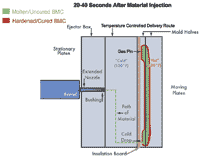
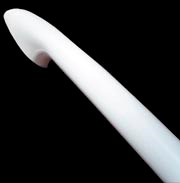

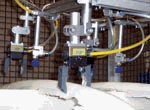
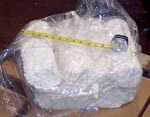
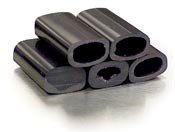

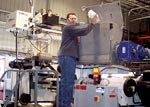

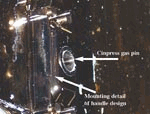










.jpg;maxWidth=300;quality=90)



